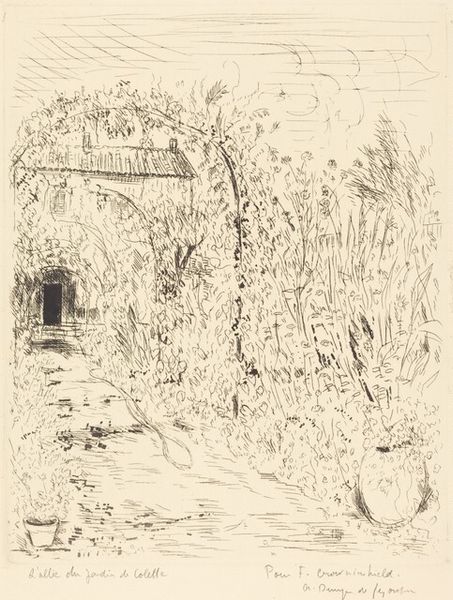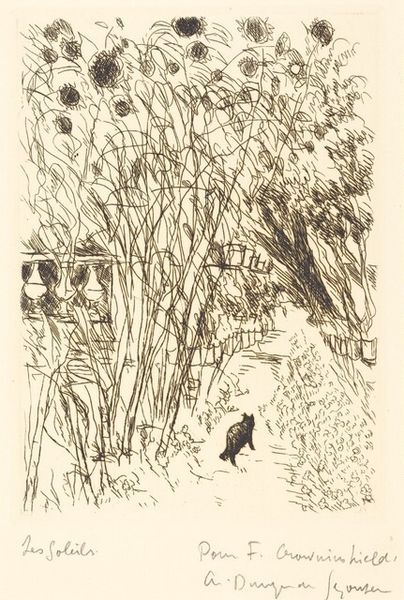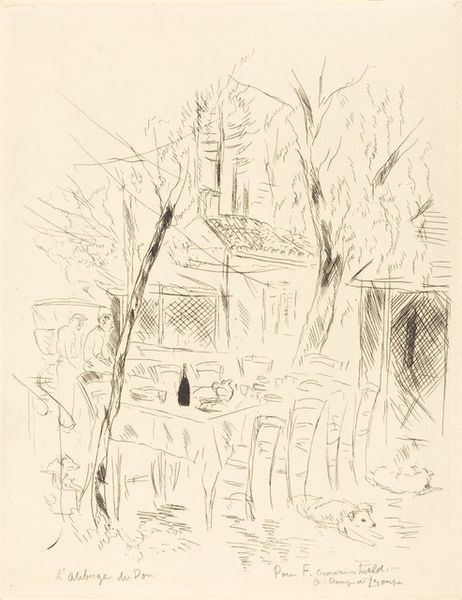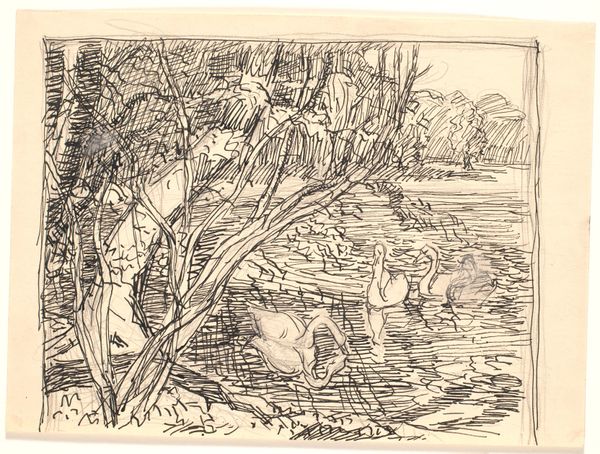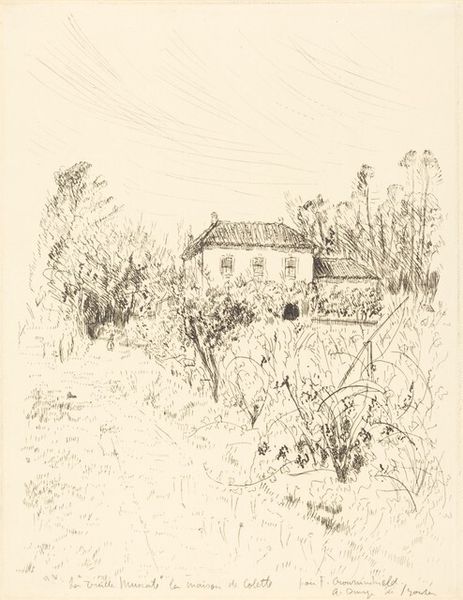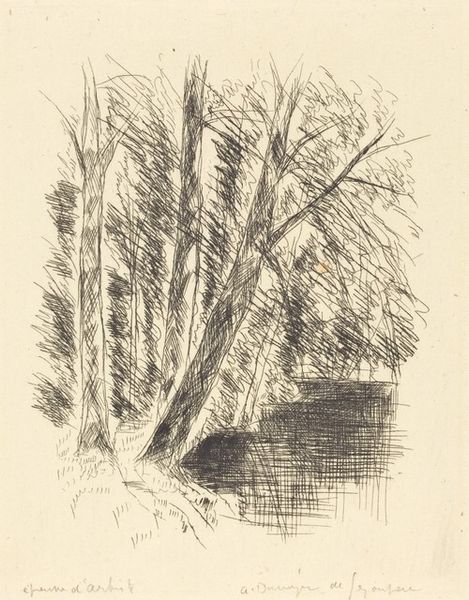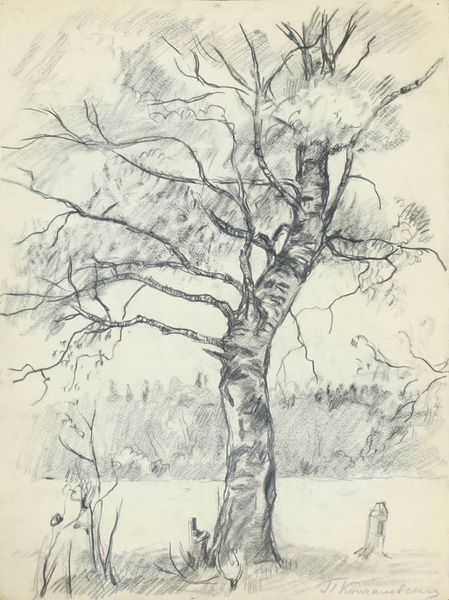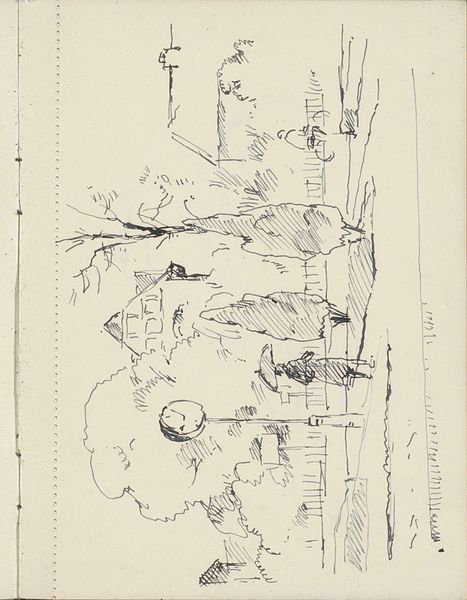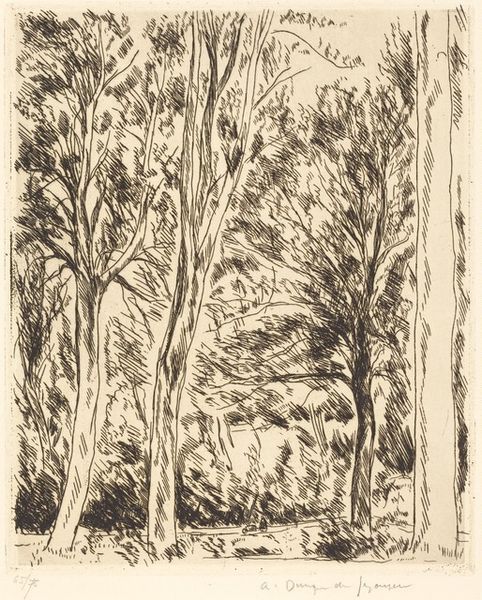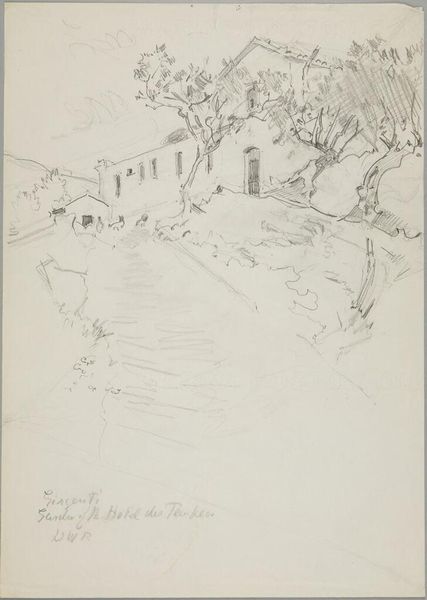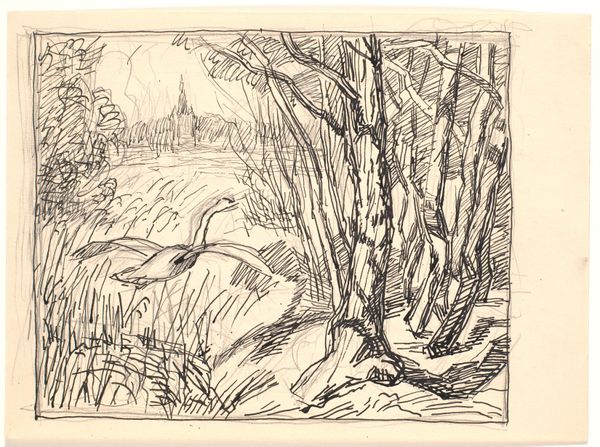
Copyright: National Gallery of Art: CC0 1.0
Curator: Immediately I'm struck by the movement conveyed with so few lines! Editor: Indeed. We're looking at "La chatte dans le jardin," or "The Cat in the Garden," an ink drawing completed by Andre Dunoyer de Segonzac sometime between 1929 and 1932. Curator: The cat at the bottom is fascinating. To me it serves as a visual signifier for self-reliance. The cat as a symbol carries that archetypal reading – independence. The surrounding chaotic but clearly tamed nature enhances that tension of wildness tamed. Editor: I think you are spot on. There's also something subtly radical about this tranquil garden scene, perhaps reflecting the changing social landscape in post-war Europe. The image feels incredibly accessible. There's a quiet radicalism in depicting everyday life and allowing viewers to access images. It invites the observer to ponder questions about visibility and class. The cat is visible, as is the landscape, so is this everyday quality its most subtle rebellion? Curator: The line work is really interesting, particularly the varying line weight. This choice brings some parts forward and pushes other aspects back. Take the empty flower pots, the abandoned bird house—they seem like little metaphors… of course, read through our 21st century lens, this could speak to larger societal changes of urbanization and abandonment, if one wished. Editor: Precisely, there is tension! This piece embodies the Impressionistic style of fleeting impressions, inviting us to pause and acknowledge the beauty and the hidden histories in these simple moments. Curator: Yes, beauty found in the quotidian... that in itself disrupts norms, challenges historical narratives by centering the ordinary. It suggests that value exists everywhere, not just in exceptional or traditionally valorized subjects. Editor: What do you make of this abandoned bird house in the upper corner? Does that bring out feelings or memories that jump out for you? Curator: Abandoned things contain powerful traces of narratives and previous users. That sense of abandoned hopes gives the composition emotional heft. Well, all things end. I appreciate its elegant form. Editor: Right? As we wrap up here, "La chatte dans le jardin" serves as a nice reminder that art exists in relationship with its sociohistorical context and carries subtle power when depicting the mundane. Curator: Agreed! Plus, the artist creates such complexity with relatively minimal marks.
Comments
No comments
Be the first to comment and join the conversation on the ultimate creative platform.
